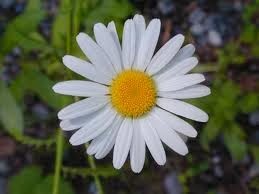If you have ever considered setting up a garden for your home,
wildflowers are an excellent "baby step" into the world of horticulture.
When properly set up and blooming, a wildflower garden adds a wonderful
array of colors to your home and can even add to your home's value. The
list below contains several noteworthy wildflowers to consider adding
to your future garden of beauty. There's also a variety of other garden plants that's great to accent your wildflowers.
- Daisys Known as Asteraceae or Compositae, Daisys are one of the most far-reaching families of plants at over 23,000 specific kinds. Their family name is also known as the aster or sunflower family. Within the language of flowers, the daisy is symbolic of innocence and purity.
- Black Eyed Susans Much like daisies, these also belong to the Asteraceae family, Black eyed Susans get their name from the black center surrounding by yellow leaves. Black-eyed Susans can be found as annuals, though some specific varieties are biennial or even perennial. Other common names for this plant include "golden Jerusalem" and "yellow ox-eye daisy." In addition to its status as the state flower of Maryland, the Black-eyed Susan means "justice" within the language of flowers.
- Trilliums Trilliums, also known as birthworts or wakerobins, are a member of the Melanthiaceae family. This plant variety grows underground, much like a potato or ginseng, yet it produces lovely flowers as its only exposed portions. Its flowers come in a variety of colors across the spectrum. Its main method of spreading seeds is through ants. Within the language of flowers, trillium represents modest ambition.
- Buttercups Buttercups comprise about 600 different varieties within the Ranunculaceae family. These perennials get their name from the yellow, or white-yellow, flowers, though some varieties have been known to produce red or orange flowers. In addition to the obvious color that spring-blooming buttercups produce, this genus is a prime attractor for several species of butterfly whom feed on its nectar. Within the language of flowers, these symbolize good feelings, as well as prosperity.
Buy Wildflowers at a reputable online nursery




